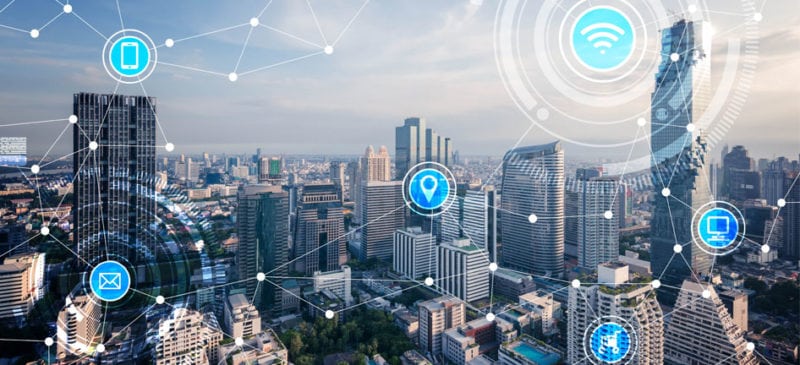
Photo Credit: AT&T
AT&T is stepping up its efforts in the connected transportation area after recently signing a deal with Honeyell, which will see Honeywell deploy AT&T Internet of Things (IOT) technology to Honeywell's connected freight and connected aircraft solutions. Joe Mosele, vice president of IOT solutions and business development at AT&T, told Via Satellite about the potential AT&T has to work with satellite providers going forward.

Joe Mosele, vice president of IOT solutions and business development at AT&T.
"While the potential to connect to satellite is there, it isn't always the most cost-effective way to connect to the network. Satellite makes sense when you are in the air or in the middle of the ocean, and we work with each customer to tailor a connectivity solution that best fits their needs. AT&T has the tools and innovation to bring together multiple technologies into one solution," Mosele said.
And when it comes to connectivity, AT&T tries to give its customers options, and this could include satellite. While 4G LTE is the best fit for some solutions, its Low Power Wide Area (LPWA) LTE-M network provides an alternative to Wi-Fi. LTE-M offers better battery life and coverage in hard-to-reach places, plus lower costs and carrier-grade security. AT&T completed deployment of its LTE-M network in the United States and Mexico last year. "It is our job to make sure we are connecting the devices and using the right technology for customer's solution. Depending on what vertical, it could be anything from satellite, LTE to LTE-M," he added.
Mosele admits that connected aircraft is definitely a growing focus area for the company. When it comes to connected solution for the airlines, he says AT&T is taking a holistic approach. "It is not only about connecting the airplane but connecting the airport and improving the logistics. We're looking at it from the macro-level, and not just one individual part. As a global leader in IOT, we are looking forward to participating in this next wave of airline innovation," he said.
AT&T is focused on IOT solutions across all industries. The company is serving vertical industries from healthcare to retail to connected car to transportation, which also includes airlines. Its involvement with the airlines includes work it is doing around the connected flight bag.
"You've seen the traditional flight bags in airports – pilots with big bulky brief cases containing flight plans. We were able to create an Electronic Flight Bag (EFB) on a connected tablet so that pilots could download the latest flight plans, safety manuals, etc.," said Mosele. "That has improved a lot of services from that perspective. While we are not providing in-flight services using Wi-Fi, we are connecting and providing telematics for the airplanes. Those services read all the sensors and diagnostics from the plane, cache the data and then communicate the data once the plane is on the ground."
AT&T hopes it can do more deals with airlines as it hopes to show airlines how it can take a lot of data it now produces and turn it into something actionable. The company has a product called Multi-Network Connect that aims to make this easier for customers. "It has one interface that analyses, visualizes and manages IOT products, whether they are on the AT&T's wireless network, another wireless carrier's network or even a satellite network," said Mosele.
Thanks to its collaboration with Honeywell, AT&T can offer a connected aircraft solution that is doing the telematics of the plane and providing fleet management. It is the same type of solution its offers to trucks and fleets but, in this case, it is on a plane. The big difference is that it aggregates that data and submits it over the AT&T global network once the plane lands. "AT&T can offer a wide area of solutions in the airline industry. We look at the industry very holistically from operations in the airport to diagnostics of the plane and the employee processes and operations. I mentioned our global SIM earlier, which gives customers one SIM that works across the globe. And with Multi-Network Connect, we can give them a single interface to manage devices. What AT&T provides is the full turnkey solution from an applications, platform and security perspective," said Mosele.
The IOT group at AT&T specializes in figuring out how it can connect machines and enable smart solutions that perform diagnostics and analytics. Its customers want to better manage their machines. "Often times, our customers are having to go out and physically look at their machines to read the sensors and the diagnostics to know what is going on. Our job is to connect those machines and to help make that process more efficient through automation," said Mosele.
One of the next steps for AT&T here will be bringing the power of Artificial Intelligence (AI) to these solutions. "[AI] is where you are going to see the biggest impact," he said. "Instead of being reactive to the data, we're helping our customers to enable predictive analytics. While we have predictive analytics today, we are just scratching the surface of possibilities. AT&T doesn't plan to develop our own AI solutions for IOT, but we are aligning ourselves with industry leaders and building it into our solutions."
